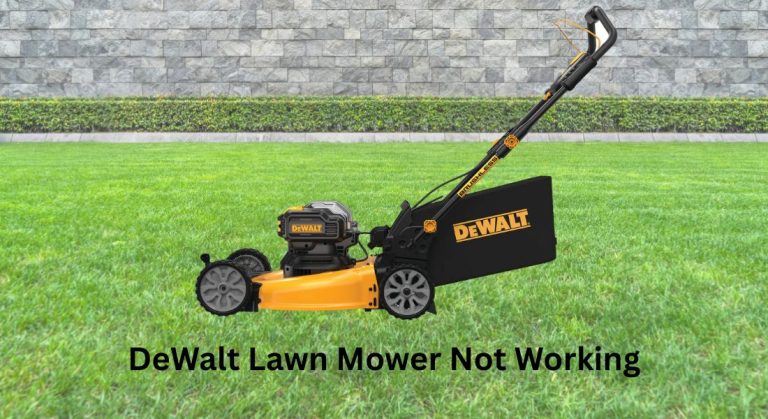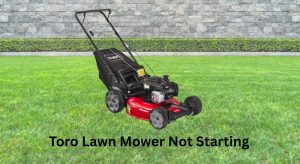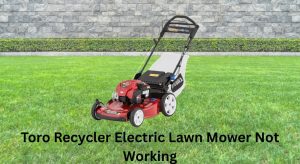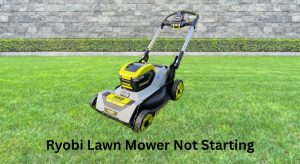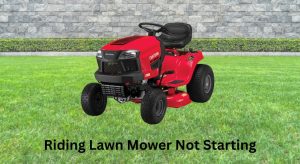Is your DeWalt lawn mower not working right when you need it most? Whether it won’t start, suddenly shuts off, or the blades won’t engage, it’s frustrating. The quickest fix for many DeWalt cordless mowers (like DCMW220P2, DCMWSP255, DCMWP233) is to reseat or swap the batteries, check the safety key, and clear any packed grass under the deck. For corded models, verify outlet power and extension cord rating.
In this complete guide, you’ll learn the most common causes of a DeWalt lawn mower not working and step-by-step solutions to get you mowing again. We’ll cover battery issues, safety lockouts, blade jams, mower cut-outs, uneven performance, and error indicators. You’ll also find prevention tips, pro advice, when to call a pro, and answers to common questions.
Common Causes of a DeWalt Lawn Mower Not Working
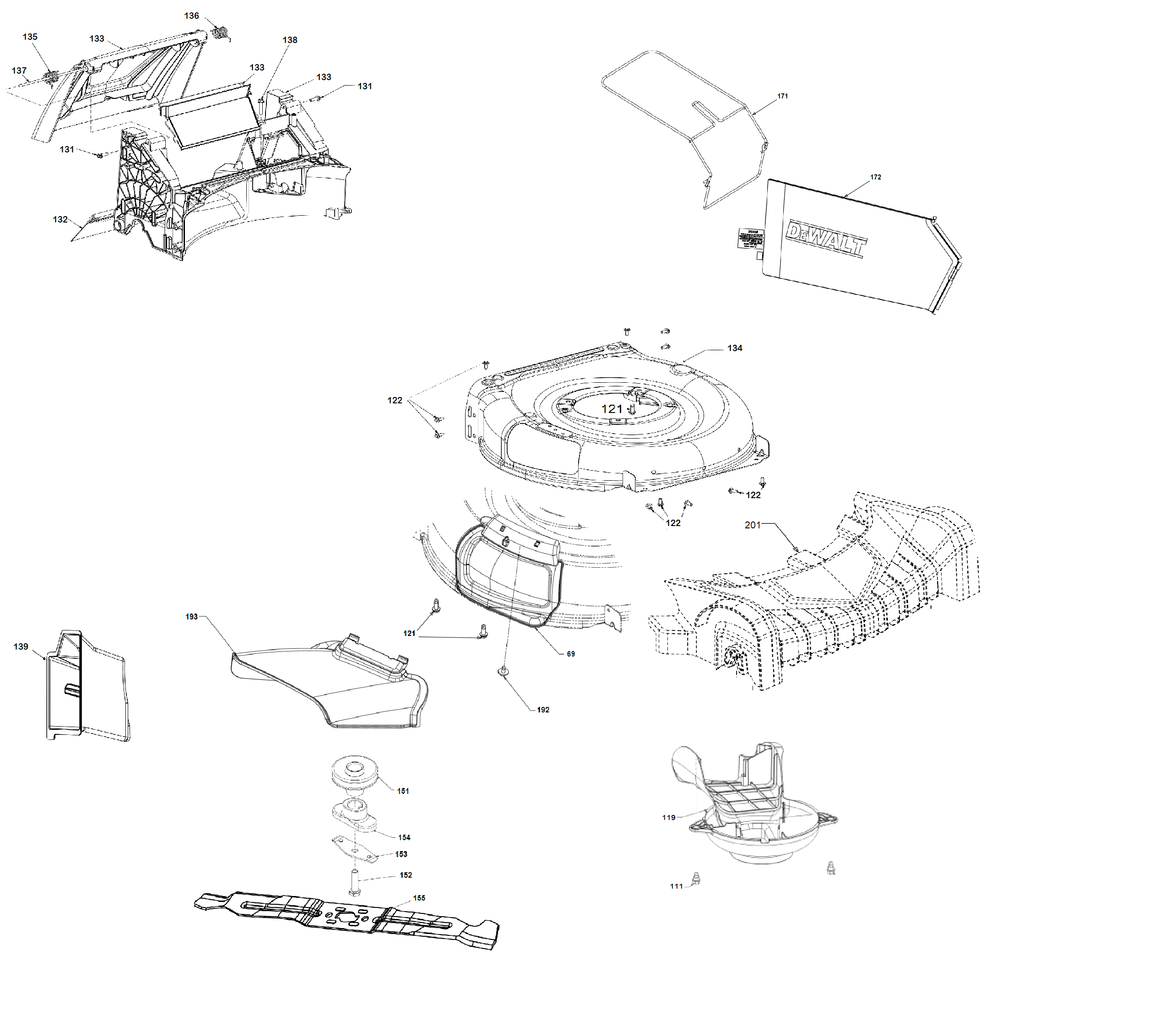
- Dead or unseated battery packs (for 20V/40V models)
- Missing or misaligned safety key
- Packed grass or debris blocking the blade or wheels
- Overheating or overload protection tripping
- Faulty or under-rated extension cord (corded models)
- Damaged blade or bent crankshaft from hitting an object
- Wet, tall, or heavy grass causing overload
- Faulty handle safety switches or loose connections
- Dull blades increasing load and draining batteries fast
- Battery not charging or LED error on charger
- Defective controller, motor, or battery port (less common)
Ways to Fix Your DeWalt Lawn Mower

Method 1: Quick Start Checks (Fastest Wins)
Diagnosing the Issue
- Symptoms: No power at all, intermittent start, or immediate shutoff.
- Likely causes: Battery seating, safety key, handle switch not engaged, or debris jam.
Fix Steps
1) Power and Safety
– Remove battery packs and take out the safety key.
– Inspect for obvious damage.
2) Battery Reseat or Swap
– Reinsert batteries firmly until you hear a click.
– Try known-good, fully charged DeWalt batteries (same system).
– For dual-battery models, ensure both packs are installed and matched in charge level.
3) Safety Key
– Confirm the safety key is fully inserted in the slot. Some models won’t start without it.
4) Handle Position and Bail Lever
– Fully extend and lock the handle. Many models have a safety interlock that prevents starting if the handle isn’t locked.
– Pull the bail lever (operator presence control) firmly while starting.
5) Clear the Deck
– Turn the mower on its side with the battery removed.
– Remove built-up grass under the deck and around the blade and discharge chute.
Testing
- Reinsert batteries and safety key.
- Stand the mower upright, set the cut height higher, and try starting in short bursts.
- If it runs, let it idle for 30 seconds, then mow a small patch of light grass.
Method 2: Battery and Charger Troubleshooting (Cordless Models)
Diagnosing the Issue
- Symptoms: No lights when charging, battery won’t charge to full, short runtime, mower dies under load, blinking LEDs.
- Likely causes: Faulty battery, thermal protection, charger issues, or mixed-capacity packs.
Fix Steps
1) Verify Charger Operation
– Plug the charger directly into a working outlet (no power strips).
– Check the charger’s LED codes. Solid red typically indicates charging; solid green means charged; alternating/blinking can indicate hot/cold delay or fault (see your charger manual, e.g., DCB115/DCB107).
2) Inspect Battery LEDs
– Press the battery’s fuel gauge. If 1 bar or none, charge fully.
– If the LED blinks a fault code on the charger, allow the pack to cool for 20–30 minutes and try again.
3) Temperature and Storage
– Important: Lithium packs won’t charge or discharge properly when too hot or too cold. Charge at room temperature (65–75°F / 18–24°C).
4) Try Another Pack/Port
– Test your mower with a different compatible DeWalt pack.
– Test suspect batteries in another DeWalt tool to isolate battery vs. mower issues.
5) Balance Batteries (Dual-Pack Models)
– Use two packs of the same capacity and similar state of charge to avoid cut-outs.
6) Contacts and Debris
– Clean battery contacts on the mower and battery with a dry cloth or electrical contact cleaner (unplugged, batteries removed). Do not use water.
Testing
- Fully charge until the charger shows green.
- Install both packs (if required) and verify a secure click.
- Start the mower in light load conditions to confirm normal operation.
Method 3: Solve Overload, Blade, and Deck Issues
Diagnosing the Issue
- Symptoms: Mower starts but stalls, runs only on low load, loud vibration, uneven cutting, or a burning smell.
- Likely causes: Dull/bent blade, packed deck, wet/tall grass overload, or bent motor shaft.
Fix Steps
1) Safety First
– Remove batteries/safety key or unplug corded mower.
2) Deck Cleaning
– Tip the mower on its side with the carburetor side up (for gas mowers; for cordless/corded, simply avoid battery side down to keep debris out of ports).
– Scrape off caked grass. Clean the discharge chute and rear bag chute.
3) Blade Inspection
– Check for nicks, bends, or warping. If the blade is bent, replace it. Do not attempt to straighten.
– Ensure the blade bolt is tight to manufacturer spec (often 35–50 ft-lbs; check your model’s manual).
4) Blade Sharpening/Replacement
– If dull, sharpen both cutting edges evenly, preserving the bevel.
– Balance the blade by hanging it on a nail through the center hole; if one side dips, remove a little more material from that side.
– If unsure, replace with an OEM DeWalt blade for your model.
5) Cut Height and Mowing Technique
– Raise the cut height one or two settings.
– Mow slower, and take partial-width passes in heavy or tall grass.
– Avoid mowing wet or very dense grass; let it dry first.
6) Check for Shaft or Deck Damage
– Spin the blade by hand. If it wobbles side-to-side or scrapes the deck, the motor shaft may be bent. This requires professional service.
Testing
- Reinstall the blade correctly and torque properly.
- Start on a small area of dry, shorter grass.
- Confirm the motor maintains speed without stalling.
Method 4: Handle, Switch, and Safety Interlock Checks
Diagnosing the Issue
- Symptoms: No start even with charged batteries; starts only when handle is wiggled; intermittent shutoff over bumps.
- Likely causes: Loose handle connections, faulty bail switch, misaligned safety interlocks, or broken wires in the folding joints.
Fix Steps
1) Handle Locks
– Fully extend and lock handle knobs. Some models have micro-switches that must be engaged.
2) Cable and Connector Inspection
– Visually inspect the wiring harness along the handle and into the deck. Look for pinched, cut, or frayed wires, especially at folding pivots.
3) Switch Test
– With power removed, gently press on the bail lever switch area and listen for a click.
– Reconnect power and try starting while holding the handle steady.
4) Connector Reseat
– If accessible, reseat quick-connect plugs at the handle junction (some models have a plug near the lower handle).
5) Replace Faulty Components
– If the bail switch feels mushy or inconsistent, it may need replacement. Check your model’s parts diagram for the correct switch assembly.
Testing
- After reseating connections, attempt a start on a flat surface.
- Wiggle-test: With the mower running and deck empty, lightly move the handle. If it cuts out, you have a wiring or switch fault needing repair/replacement.
Method 5: Corded DeWalt Mower Power Issues
Diagnosing the Issue
- Symptoms: No power, trips breaker, weak performance, or hot cord.
- Likely causes: Bad outlet/GFCI trip, under-rated extension cord, long cord voltage drop, or damaged cord.
Fix Steps
1) Outlet and Breaker
– Test the outlet with another tool. Reset GFCI if tripped.
2) Correct Extension Cord
– Use a heavy-gauge outdoor cord: 12 AWG up to 100 ft, 14 AWG up to 50 ft. Avoid 16 AWG for mowers.
3) Cord Inspection
– Check for cuts, frays, or melted sections. Replace damaged cords immediately.
4) Direct Connection
– Plug directly into a known-good outlet, no power strips. Try a shorter, heavier cord.
5) Overload Protection
– If the mower stops, let it cool 15–30 minutes before retrying.
Testing
- With a correct cord and outlet, start the mower unloaded, then engage on short, dry grass.
How to Prevent Future DeWalt Mower Problems
- Keep blades sharp and balanced to reduce motor load.
- Clean the deck and air passages after each mow to prevent buildup.
- Charge and store batteries at room temperature; avoid leaving them in hot cars or cold sheds.
- Use matched, high-capacity packs for dual-battery models.
- Avoid mowing wet or excessively tall grass; take multiple passes.
- Inspect handle wiring and locks regularly, especially after folding for storage.
- Use properly rated extension cords for corded models.
Pro Tips
- Start high, finish low: Make an initial pass at a high cut height, then lower one notch for a clean finish without overload.
- Battery rotation: If you have multiple packs, rotate them to even out wear and maintain balanced capacity.
- Post-mow cool-down: Let batteries cool 10–15 minutes before charging to extend lifespan.
- Keep spares ready: A spare sharp blade saves time and keeps performance consistent.
- Torque matters: Use a torque wrench on the blade bolt to spec; too loose causes vibration, too tight risks damage.
- Deck coating: A light application of silicone spray under the deck helps reduce grass sticking.
- Seasonal inspection: Before spring, check fasteners, wheels, and blade; replace worn parts proactively.
When to Call a Professional
- Persistent cut-outs with no visible cause after following the steps above
- Bent motor shaft (blade wobble) or cracked deck
- Burnt smell from motor housing or visible arcing/sparks
- Battery packs that won’t charge and show fault on multiple chargers
- Corroded or melted connectors, or damaged wiring in the deck
- Units under warranty: Contact DeWalt Service for authorized repair to avoid voiding coverage
Typical costs: Diagnostic $40–$80; blade replacement $20–$60; switch/wiring repairs $40–$120; motor or controller replacement can be $120–$300+. Warranty or service plans may reduce costs.
Warranty tips: Keep proof of purchase, record model and serial numbers, and avoid opening sealed electronic housings, which may void warranty.
FAQ
Q: Why does my DeWalt mower start then immediately stop?
A: This often indicates a safety interlock not fully engaged, a loose handle connection, or overload protection due to packed grass or a dull blade. Reseat batteries, ensure the safety key is inserted, lock the handle, clear the deck, and try again.
Q: My batteries show full, but the mower won’t power on. What now?
A: Check the safety key and handle interlocks first. Try alternate batteries and confirm the battery contacts are clean. Inspect the bail switch and handle wiring for damage, especially at the folding joints.
Q: How long should DeWalt mower batteries last?
A: Runtime depends on grass conditions and capacity. A pair of healthy 5Ah packs may run 20–40 minutes in average conditions. Heavy, wet, or tall grass shortens runtime. Battery lifespan is typically 3–5 years or 300–500 cycles with proper care.
Q: Can I use any DeWalt battery with my mower?
A: Use the battery type your model is designed for (e.g., 20V MAX or 40V MAX). Dual-battery models may require two packs of the same voltage and benefit from matching capacity. Mixing voltages is not supported.
Q: Why does my mower shut off in tall or wet grass?
A: The motor’s overload protection trips to prevent damage. Raise the cut height, mow slower, take narrower passes, and wait for grass to dry. Sharpening the blade also reduces load.
Q: The blade vibrates or the mower shakes—what’s wrong?
A: Likely a bent or unbalanced blade, or loose blade bolt. Remove the battery, inspect and balance or replace the blade, and torque the bolt to spec. If wobble persists, the motor shaft may be bent, requiring service.
Q: My charger blinks and won’t charge the battery. Is it bad?
A: Blinking can indicate hot/cold delay or a battery fault. Let the battery reach room temperature and retry. Test with another charger or battery to isolate the issue. Persistent fault codes suggest a bad battery.
Q: Can I hose off my DeWalt mower?
A: No. Avoid water on the motor and electronics. Use a plastic scraper and a damp cloth. For stubborn debris, use compressed air carefully. Always remove batteries before cleaning.
Alternative Solutions
If your DeWalt mower is beyond repair or not meeting your yard’s needs, consider these alternatives:
| Solution | Pros | Cons | Best For |
|---|---|---|---|
| Higher-capacity DeWalt packs (e.g., 10Ah) | Longer runtime, plug-and-play | Higher cost, heavier | Users happy with current mower but need more runtime |
| Self-propelled DeWalt model upgrade | Easier mowing on slopes, steadier pace | More expensive, heavier | Medium to large yards, uneven terrain |
| Gas mower | High power, long runtime | Maintenance, noise, emissions | Very thick/tall grass, large properties |
| Corded electric mower | Unlimited runtime, low maintenance | Cord management, outlet dependence | Small yards near power source |
| Reel mower | Quiet, low maintenance | Manual effort, limited to short grass | Small, well-maintained lawns |
Get Your DeWalt Mower Working Again
Following this guide, you now have multiple solutions to fix your DeWalt lawn mower not working:
– Quick checks for batteries, safety key, and handle interlocks
– Battery and charger diagnostics to restore power
– Deck cleaning, blade repair, and overload prevention
– Handle and wiring fixes for intermittent issues
– Corded power best practices
Don’t let a simple issue sideline your mower. Work through these methods in order, and you’ll likely have your DeWalt back to cutting cleanly today. Still stuck? Describe your exact model and symptoms in the comments for tailored advice, and consider professional service if you suspect motor or wiring damage.
Found this helpful? Bookmark this guide for future reference and keep your DeWalt mower running smoothly all season.

